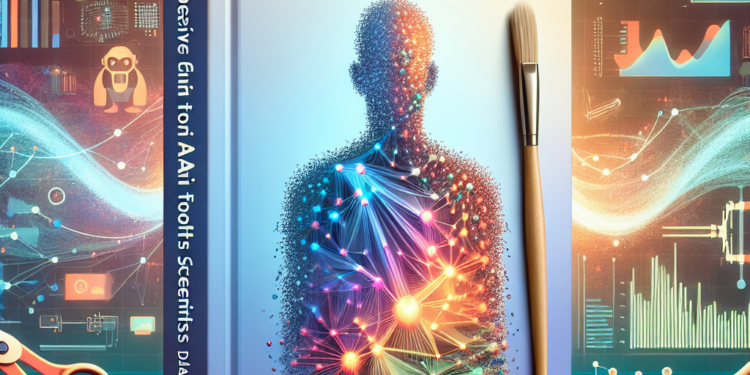As the field of artificial intelligence (AI) continues to grow at a rapid pace, data scientists are faced with an increasing number of tools and technologies to help them harness the power of AI. From machine learning algorithms to natural language processing tools, there are a wide variety of tools available to data scientists to help them analyze, interpret, and make sense of large amounts of data. In this comprehensive guide, we will explore some of the most popular AI tools for data scientists, and discuss how they can be used to enhance their work.
1. Machine Learning Algorithms:
Machine learning algorithms are at the core of many AI tools used by data scientists. These algorithms allow computers to learn from and make predictions or decisions based on data. There are several types of machine learning algorithms, including supervised learning, unsupervised learning, and reinforcement learning. Some popular machine learning algorithms include decision trees, support vector machines, and neural networks.
Supervised learning algorithms are used when the data is labeled and the goal is to predict an output based on input data. Unsupervised learning algorithms, on the other hand, are used when the data is not labeled, and the goal is to uncover hidden patterns or relationships within the data. Reinforcement learning algorithms are used when the algorithm must learn from trial and error based on feedback from the environment.
2. Natural Language Processing (NLP) Tools:
Natural Language Processing (NLP) tools are used to analyze, interpret, and generate human language text data. These tools allow data scientists to extract insights from large amounts of text data, such as social media posts, customer reviews, or news articles. Some popular NLP tools include sentiment analysis tools, text summarization tools, and entity recognition tools.
Sentiment analysis tools are used to determine the sentiment or emotion expressed in a piece of text, such as positive, negative, or neutral. Text summarization tools are used to create a concise summary of a lengthy piece of text. Entity recognition tools are used to identify and classify named entities within a piece of text, such as people, organizations, or locations.
3. Computer Vision Tools:
Computer vision tools are used to analyze and interpret visual data, such as images and videos. These tools allow data scientists to extract information from visual data, such as object recognition, image segmentation, or facial recognition. Some popular computer vision tools include image classification tools, object detection tools, and image segmentation tools.
Image classification tools are used to categorize images into different classes or categories. Object detection tools are used to identify and locate objects within an image. Image segmentation tools are used to partition an image into different segments or regions based on their content.
4. Data Visualization Tools:
Data visualization tools are used to create visual representations of data to help data scientists interpret and communicate their findings. These tools allow data scientists to create charts, graphs, and dashboards to make complex data more understandable. Some popular data visualization tools include Tableau, Power BI, and Plotly.
Tableau is a powerful data visualization tool that allows users to create interactive dashboards and visualizations to explore and understand their data. Power BI is a business analytics tool that allows users to create interactive reports and dashboards to visualize their data. Plotly is a Python library that allows users to create interactive charts and graphs for data visualization.
5. Cloud Computing Platforms:
Cloud computing platforms are used to store, manage, and analyze large amounts of data in the cloud. These platforms allow data scientists to access powerful computing resources and scale their workloads as needed. Some popular cloud computing platforms include Amazon Web Services (AWS), Google Cloud Platform (GCP), and Microsoft Azure.
AWS is a comprehensive cloud computing platform that offers a wide range of services, including compute, storage, and machine learning. GCP is a cloud computing platform that offers services for data storage, machine learning, and analytics. Microsoft Azure is a cloud computing platform that offers services for data storage, analytics, and AI.
6. Data Cleaning and Preprocessing Tools:
Data cleaning and preprocessing tools are used to clean, transform, and prepare data for analysis. These tools allow data scientists to address missing data, remove outliers, and normalize data before applying machine learning algorithms. Some popular data cleaning and preprocessing tools include Pandas, NumPy, and Scikit-learn.
Pandas is a Python library that provides data structures and functions for data manipulation, cleaning, and analysis. NumPy is a Python library that provides support for large, multi-dimensional arrays and matrices. Scikit-learn is a Python library that provides tools for data preprocessing, feature extraction, and model selection.
7. Automated Machine Learning Tools:
Automated machine learning tools are used to automate the process of building and deploying machine learning models. These tools allow data scientists to quickly experiment with different algorithms, hyperparameters, and features to find the best model for their data. Some popular automated machine learning tools include AutoML, H2O.ai, and DataRobot.
AutoML is a tool that automates the machine learning process, from data preprocessing to model selection and deployment. H2O.ai is a machine learning platform that automates the model building process, allowing users to train, evaluate, and deploy machine learning models. DataRobot is a machine learning platform that automates the process of building predictive models, from data preprocessing to feature selection.
8. Model Deployment and Monitoring Tools:
Model deployment and monitoring tools are used to deploy, manage, and monitor machine learning models in production. These tools allow data scientists to deploy their models to production environments, monitor their performance, and make adjustments as needed. Some popular model deployment and monitoring tools include TensorFlow Serving, MLflow, and Kubeflow.
TensorFlow Serving is a tool for serving machine learning models in production, allowing data scientists to deploy their models as scalable, high-performance web services. MLflow is an open-source platform for managing the end-to-end machine learning lifecycle, from model training to deployment. Kubeflow is a machine learning platform that allows data scientists to deploy and manage machine learning models on Kubernetes.
In conclusion, the field of artificial intelligence is rapidly evolving, and data scientists have access to a wide range of tools to help them harness the power of AI. From machine learning algorithms to natural language processing tools, there are a variety of tools available to data scientists to analyze, interpret, and make sense of large amounts of data. By leveraging these tools effectively, data scientists can unlock valuable insights and drive innovation in their organizations.













